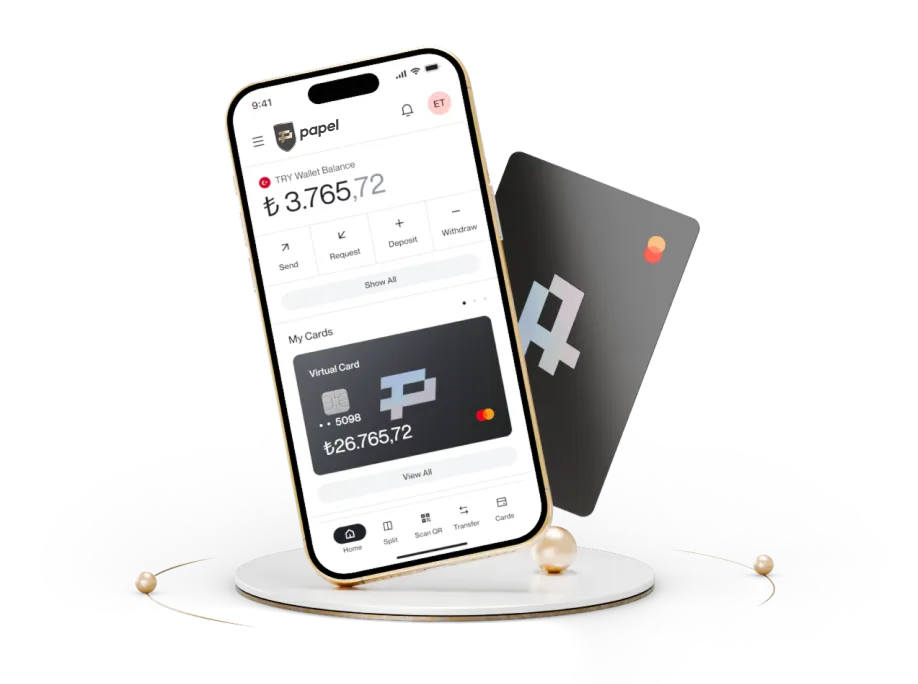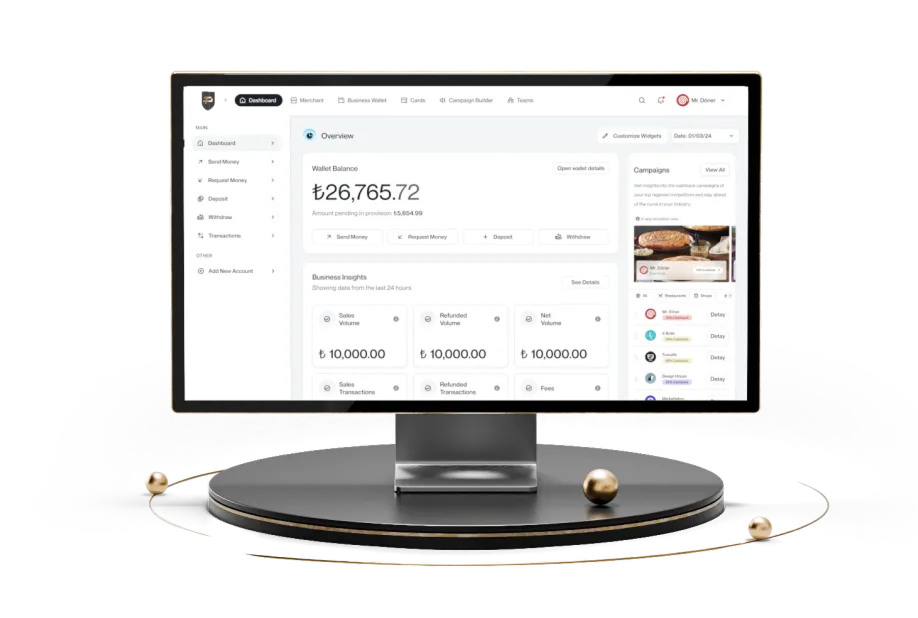7 Ways to Keep Your Credit Card Information Safe
Fraud methods encountered in physical and online transactions can lead to financial and emotional harm for users. Cyber attacks such as card skimming and phishing highlight how vital secure payment habits are. In this article on Papel Blog, we discuss virtual card usage, the 3D Secure feature, methods to ensure mobile application security, precautions against fraud, and the key points of safe shopping.
Threats to Credit Card Security
To ensure credit card security, it is essential to be cautious in online and physical shopping. To protect against potential fraud and theft attempts, here are the threats you may encounter and possible solutions:
Card Information Skimming
Card information can be copied from the magnetic stripe or chip. The process of stealing card information, which can occur at physical POS devices or ATMs, is carried out using hidden devices (skimmers) added to the card slot at ATMs. Therefore, ensuring the physical POS device or ATM is secure before using your card is important.
Online and Phone Fraud (Vishing)
Methods such as fake emails, SMS, or phone calls can be used to steal personal information. Through these methods, users may be directed to fake websites where their credit card information can be stolen. Therefore, it's crucial not to trust requests from unofficial channels and to be cautious when using these communication methods.
Mobile Application Security
The security of mobile payment applications, which store card information to facilitate payment processes, is directly related to the device's security. Therefore, you should install up-to-date software and use reliable applications to protect your device. This way, you can protect against threats.
Cyber Attacks and Malware
Malicious software (malware) can infect your computer or mobile device, stealing your credit card information. To protect against these software programs that collect credit card information through browsers, you should keep your browsers up to date and use reliable antivirus software.

7 Effective Ways to Protect Card Information
To shop safely, it's essential to develop conscious payment habits. To enhance security during credit card use and protect against potential fraud attempts, you can apply the following methods:
Use a Virtual Card
Virtual cards, generally single-use, allow you to shop online without sharing your physical card information. Since these cards reduce the risk of stolen information, you can shop securely.
Activate the 3D Secure Feature
3D Secure is a security protocol that verifies the cardholder's identity during online shopping. During payment, your identity is verified with a one-time password (OTP) sent to your mobile phone, preventing unauthorized use. Most banks and credit card providers offer this feature during payment.
Strong Passwords and Biometric Verification
Pay attention to using strong and unique passwords to enhance security on your devices. Additionally, you can access your device quickly and securely with biometric verification methods like fingerprint and facial recognition. These security methods strengthen your security without manually entering your passwords.
Avoid Shopping with Public Wi-Fi
Public Wi-Fi networks can be vulnerable to cyber attacks, so using your mobile data or a secure Wi-Fi network is essential when shopping online.
Keep Mobile Applications Updated
By keeping your mobile banking and payment applications up to date, you can ensure that security vulnerabilities are closed. Outdated applications can be vulnerable to cyber-attacks and may lead to the theft of your personal information.
Regularly Check Account Activity
Regularly checking your credit card account activity helps you detect suspicious transactions early. If you notice any unauthorized transactions, you should immediately contact your bank to take necessary precautions.
Activate SMS and Instant Notifications
By activating SMS notifications and instant push notifications offered by your bank, you can be instantly informed about transactions. These notifications help you detect fraud attempts early and intervene quickly.

How to Ensure Security in Mobile Payments
To ensure security in mobile payments and protect against potential cyber threats, the following precautions can be taken:
Device Access Settings
To enhance the security of your mobile device, the first step is to use screen locks and biometric verification methods to limit unauthorized access to your device. In addition to methods like passwords, patterns, or PINs, biometric verifications such as fingerprint or facial recognition significantly increase your security. Another critical step is to check the access permissions of applications. Application access permission settings vary on each device; you can learn your device's settings through websites or customer service. Additionally, it's essential to manage the NFC (Near Field Communication) feature securely. You can use mobile wallets to make contactless payments by activating this feature on your device.
Avoid Unauthorized Applications
Only official and reliable applications should be preferred to ensure security in mobile payments. Downloading from official app stores like Google Play Store or Apple App Store can be an ideal choice to protect against malicious software and fake applications. When downloading applications, carefully review access permissions and pay attention to using only applications that grant necessary permissions. Also, using up-to-date versions of applications helps close potential security vulnerabilities. This step should be taken seriously since updates often include new security patches. Finally, avoiding applications with low ratings, negative reviews, or published by unknown developers will help protect your personal and financial information.
What to Do in Case of Suspicious Activity
If you notice a suspicious transaction, it's important to act quickly. Since each bank's transaction dispute procedures may vary, using the bank's official channels to take action is appropriate. Here's what you should do in a suspicious situation:
Card Cancellation and Requesting a New Card
If you notice that your card has been stolen or lost or a suspicious transaction has occurred, the first thing you should do is immediately cancel your card. You can call your bank's customer service number to deactivate your card and request a new one.
Contacting Bank Customer Service
Most banks offer special dispute channels for suspicious transactions. If you encounter any suspicious transactions, you should contact your bank's customer service to report the suspicious transaction and file a dispute.
Tips for Secure Shopping with a Credit Card
To protect your personal and financial information, the security of your credit card is important. Here are some key points to consider for secure shopping:
Shop from Trusted Sites
It's important to shop only from reliable and well-known e-commerce sites. You can access official websites by typing their URLs directly into your browser. This way, you can protect yourself from fake or malicious websites. Be careful not to open emails from unknown senders, as such emails may contain phishing attacks.
Browser Security Certificates
To check the security of the website you plan to shop from, look for the "https://" expression and the lock icon in the browser's address bar. This way, you can verify the validity of the site's SSL/TLS certificate and whether data transmission is encrypted. An SSL certificate authenticates the website's identity and secures communication between the user and the site.
The information presented in this blog post is general and does not constitute legal, financial, or investment advice. The content has been prepared for informational purposes, and it is recommended that you seek professional advice for your specific circumstances. The statements in the article do not carry any binding or liability and reflect only the author's evaluations. All responsibility for decisions you make lies with you, and Papel Electronic Money and Payment Services Inc. does not accept any obligations in this context.

